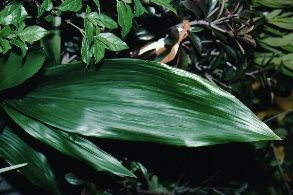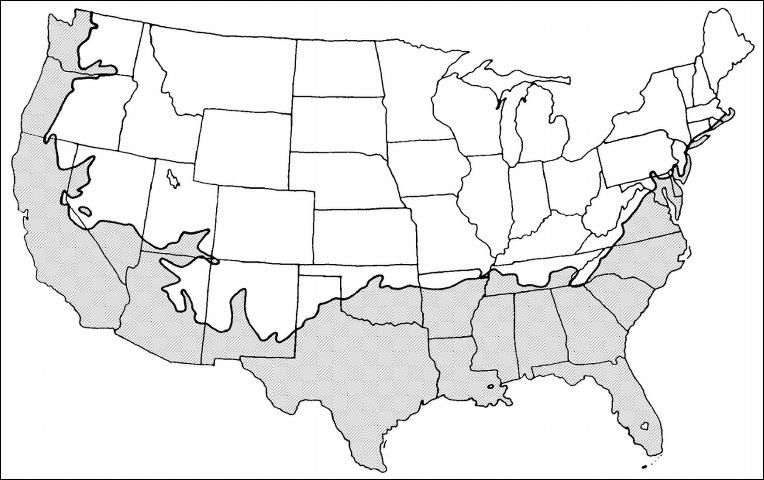Introduction
Growing in large, leafy clumps, cast iron plant is unsurpassable for dependable, dark green foliage in very lowlight conditions. The glossy, coarse-textured leaves provide an excellent background for low flowering annuals or make effective mass plantings when allowed to spread by underground stems into a groundcover. It also makes a nice facer plant in front of a shrub border.

Credit: Edward F. Gilman, UF/IFAS

Credit: Edward F. Gilman, UF/IFAS
General Information
Scientific name: Aspidistra elatior
Pronunciation: ass-pid-DISS-truh ee-LAY-tee-or
Common name(s): cast iron plant, aspidistra, barroom plant
Family: Ruscaceae
Plant type: perennial; herbaceous
USDA hardiness zones: 7 through 11 (Figure 3)
Planting month for zone 7: year round
Planting month for zone 8: year round
Planting month for zone 9: year round
Planting month for zone 10 and 11: year round
Origin: native to temperate Asia
Invasive potential: not considered a problem species at this time and may be recommended by UF/IFAS faculty (reassess in 10 years)
Uses: container or above-ground planter; ground cover; suitable for growing indoors; accent; edging
Availability: generally available in many areas within its hardiness range

Credit: undefined
Description
Height: 1 to 2 feet
Spread: 1 to 2 feet
Plant habit: upright
Plant density: moderate
Growth rate: slow
Texture: coarse
Foliage
Leaf arrangement: most emerge from the soil, usually without a stem
Leaf type: simple
Leaf margin: entire
Leaf shape: oblong
Leaf venation: parallel
Leaf type and persistence: evergreen
Leaf blade length: 18 to 36 inches
Leaf color: variegated
Fall color: no fall color change
Fall characteristic: not showy
Flower
Flower color: brown
Flower characteristic: flowers periodically throughout the year
Fruit
Fruit shape: no fruit
Fruit length: no fruit
Fruit cover: no fruit
Fruit color: not applicable
Fruit characteristic: inconspicuous and not showy
Trunk and Branches
Trunk/bark/branches: typically multi-trunked or clumping stems
Current year stem/twig color: not applicable
Current year stem/twig thickness: not applicable
Culture
Light requirement: plant grows in the shade
Soil tolerances: slightly alkaline; clay; sand; acidic; loam
Drought tolerance: moderate
Soil salt tolerances: poor
Plant spacing: 12 to 18 inches
Other
Roots: not applicable
Winter interest: no special winter interest
Outstanding plant: not particularly outstanding
Pest resistance: no serious pests are normally seen on the plant
Use and Management
Cast iron plant is tolerant of a wide range of soils, from very rich to very poor. The variegated version of this plant needs fairly poor soil to retain its coloration. While tolerant of low moisture conditions, cast iron plant should be watered during periods of drought. Plant on 12 to 18-inch centers for quick ground cover effect.
Growing as far north as Raleigh, North Carolina, cast iron plant should be sheltered from winter winds. In exposed locations, the leaves are very susceptible to winter burn, perhaps from the inadequate moisture conditions during the colder months. If desired, all the old foliage may be removed in spring to provide fresh growth each year.
The cultivar 'Variegata' has leaves alternately striped green and white in varied widths. Plants will tend to lose these stripes if planted in rich soil.
Propagation is by division of the matted clumps.
Pests and Diseases
Very resistant to insect pests.
Cast iron plant is susceptible to leaf-spotting diseases.